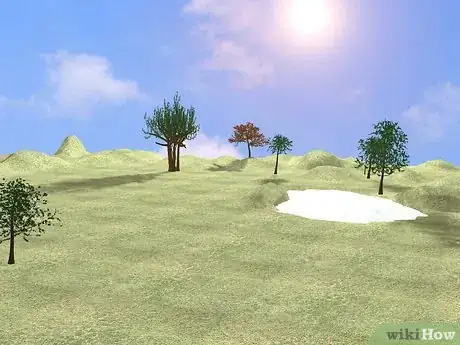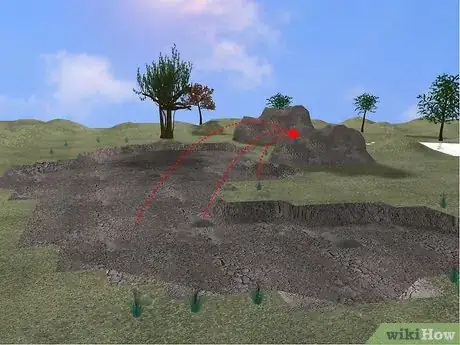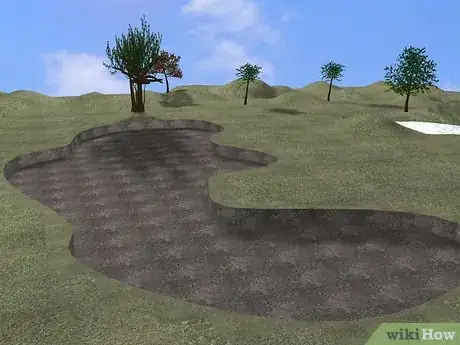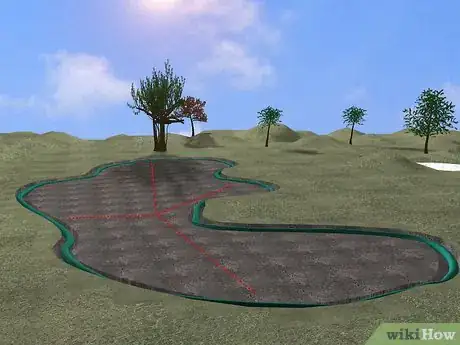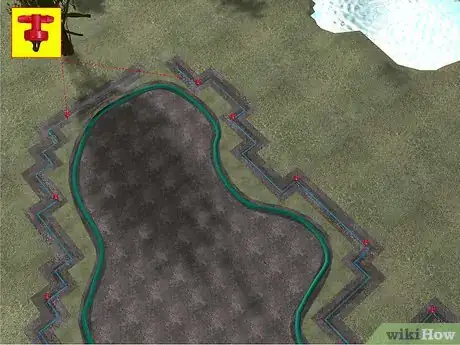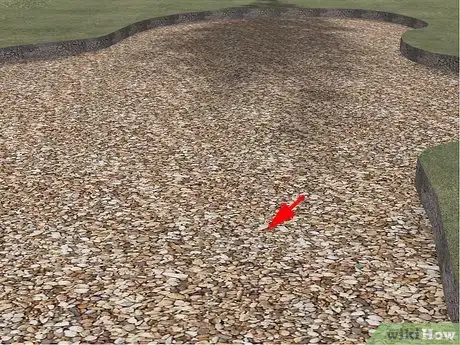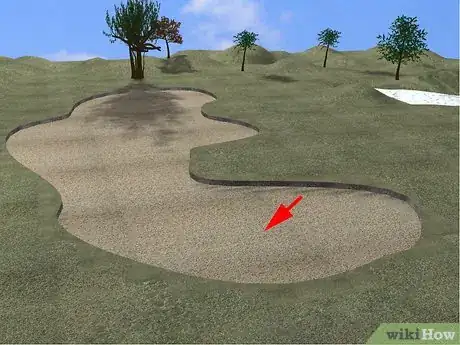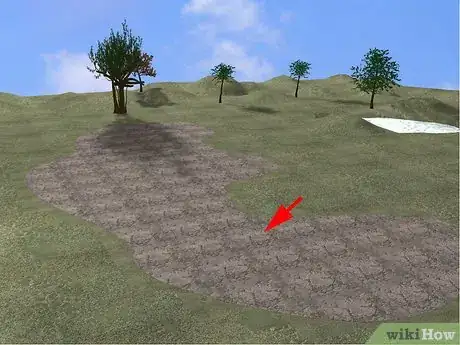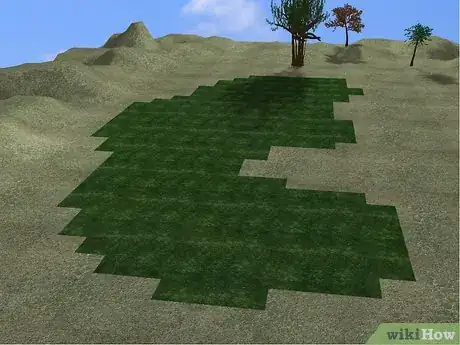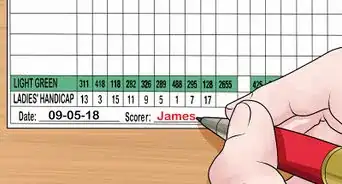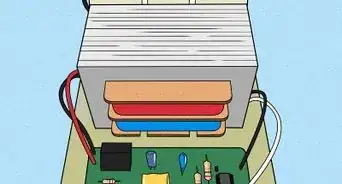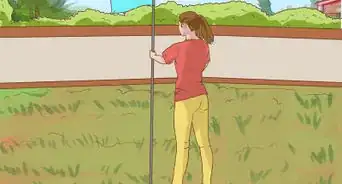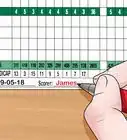X
wikiHow is a “wiki,” similar to Wikipedia, which means that many of our articles are co-written by multiple authors. To create this article, volunteer authors worked to edit and improve it over time.
This article has been viewed 198,591 times.
Learn more...
Many golf enthusiasts build golf greens in their back yards so they can practice putting without traveling to a golf course and paying fees. While you can build a golf green by grooming the grass you have or by planting grass, if you want a green that meets the standards of the U.S. Golf Association (USGA), you must excavate the area, bring in gravel and topsoil, and install irrigation and drainage systems.
Steps
-
1Choose a location. Your green should be built on a spot that has sandy soil, plenty of sun and good drainage. The location must also allow for breezes to come through in order to keep the grass healthy.[1]
-
2Excavate the area of your golf green to a depth of 20 inches (51 cm). Be sure to remove all the existing sod so you don't have to contend with weeds.Advertisement
-
3Design the green. It should have a variety of slopes to challenge you, but ultimately slope away from the center. This will prevent puddles from forming after it rains.
- If you want to have a depression in your green, you must install a drain pipe beneath it to carry away the water. However, this won't work if you build a green in a climate where the puddle will freeze during winter.
-
4Install the drainage system in 8-inch (20 cm) trenches to ensure that water will drain away from the center.[2] Duct tape the connections and wrap the pipes so they won't come apart or you'll have to dig up your green to make repairs later.
-
5Put in an irrigation system if necessary. Keep in mind that adequate, even irrigation is the key to keeping turf healthy. Watering your green with a garden hose is time-consuming and tends to irrigate unevenly.
- It's easiest to use your municipal water source if you do not live in an area that restricts water usage during droughts. If you choose a different water source (well, rainwater, gray water, etc.), you will have to more carefully monitor the effect of the water on your turf and irrigation system. Some water sources may clog sprinkler nozzles or introduce harmful chemicals.
- You can water your green with garden sprinklers or drip lines connected to timers, but you will spend a lot of time moving them on and off the green. An underground system with pop-up sprinklers can be fully automated.
- Install a residential sprinkler system rather than one designed for a golf course. Golf course irrigation systems operate at higher pressures in order to spread the water over a wider area. However, since you only have one green to irrigate, a residential system will work well and is less expensive.
-
6Cover the area with a 4-inch (10 cm) layer of pea gravel. The gravel will hold water near the roots when you irrigate the green, but will allow water to pass through quickly during heavy rain so the grass doesn't drown. Compact the gravel layer.[3]
-
7Add 2 inches (5 cm) of sand on top of the gravel and compact it.
-
8Top the sand with about 14 inches (35 cm) of topsoil that consists of 60 percent sand and no more than 20 percent clay. It's best if you buy the right soil and bring it in, but you can test the soil you've got to see if it meets USGA standards. Compact this layer.
-
9Seed or sod your green. Sodding often results in an uneven green, so seed instead if you have the time and patience to care for the grass until it matures. The variety of grass you will use for your green will largely depend on your climate.[4]
-
10Mark the edges of your green by sodding the perimeter with rougher grass. You may want to add a vapor barrier around your green before sodding to keep the surrounding area from sucking water away or adding water to your green.
-
11Buy your cups, pins and flags from a supplier of golf course equipment. You may also want a cup changer that will allow you to change the position of your cup. You will also need to buy a special mower and mow your new green every day. You might be able to pick up a used one for less than $5000.00.[5]
Advertisement
Community Q&A
-
QuestionWhat kind of grass should be used in the US northeast?
 Community AnswerMany golf courses in the NE have creeping bentgrass greens. 007 and PennCross are popular varieties.
Community AnswerMany golf courses in the NE have creeping bentgrass greens. 007 and PennCross are popular varieties. -
QuestionWhat kind of grass do I need for a golf green in Idaho Falls, Idaho?
 Community AnswerBentgrass. This will withstand winter damage and give you an even putting surface.
Community AnswerBentgrass. This will withstand winter damage and give you an even putting surface. -
QuestionCan I put a deeper cup in my green that would penetrate the sand and gravel? Would this do any harm to the drainage?
 Community AnswerYou would never set a cup deeper than the 14-inch top layer -- the cup cutter wouldn't be large enough to go that deep. Also, there is no reason to be that deep.
Community AnswerYou would never set a cup deeper than the 14-inch top layer -- the cup cutter wouldn't be large enough to go that deep. Also, there is no reason to be that deep.
Advertisement
References
- ↑ https://www.golfswingsystems.co.uk/blog/how-to-build-your-own-putting-green/
- ↑ https://www.golfswingsystems.co.uk/blog/how-to-build-your-own-putting-green/
- ↑ https://www.golfdigest.com/story/do-it-yourself-how-to-build-your-own-putting-green
- ↑ https://www.uaex.edu/publications/PDF/FSA-6143.pdf
- ↑ https://www.uaex.edu/publications/PDF/FSA-6143.pdf
About This Article
Advertisement
